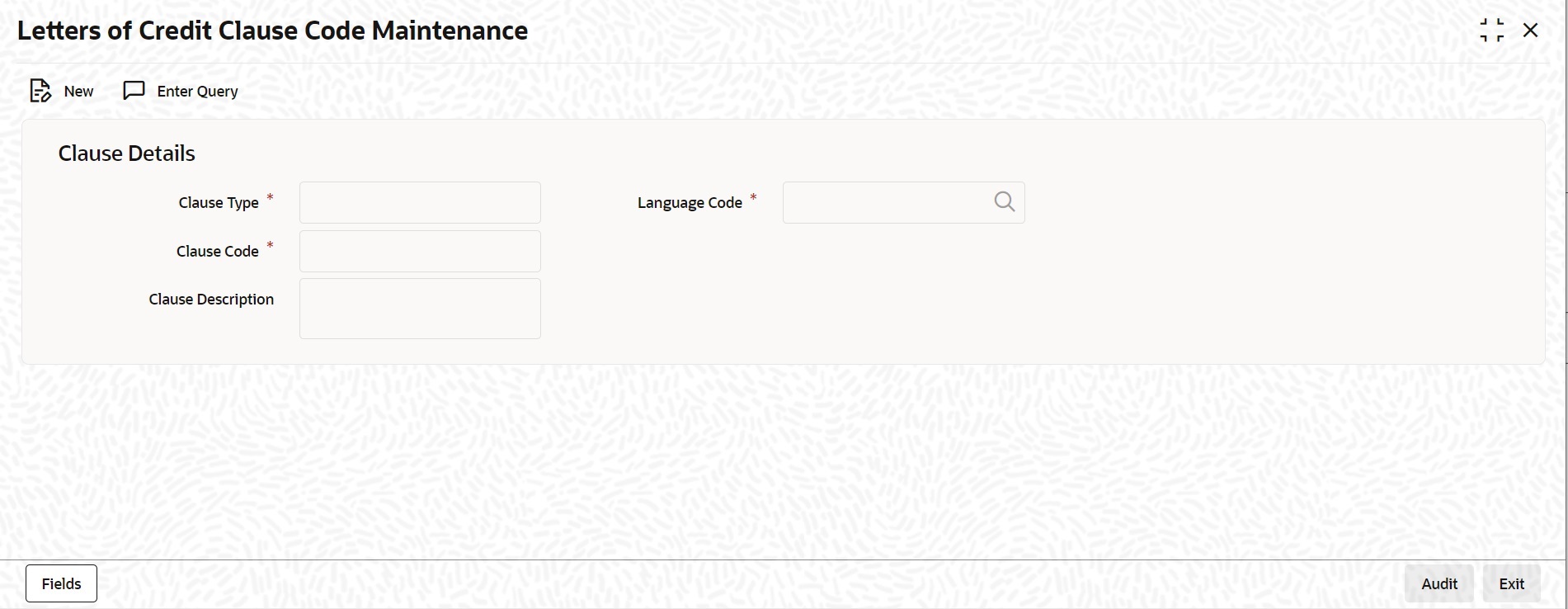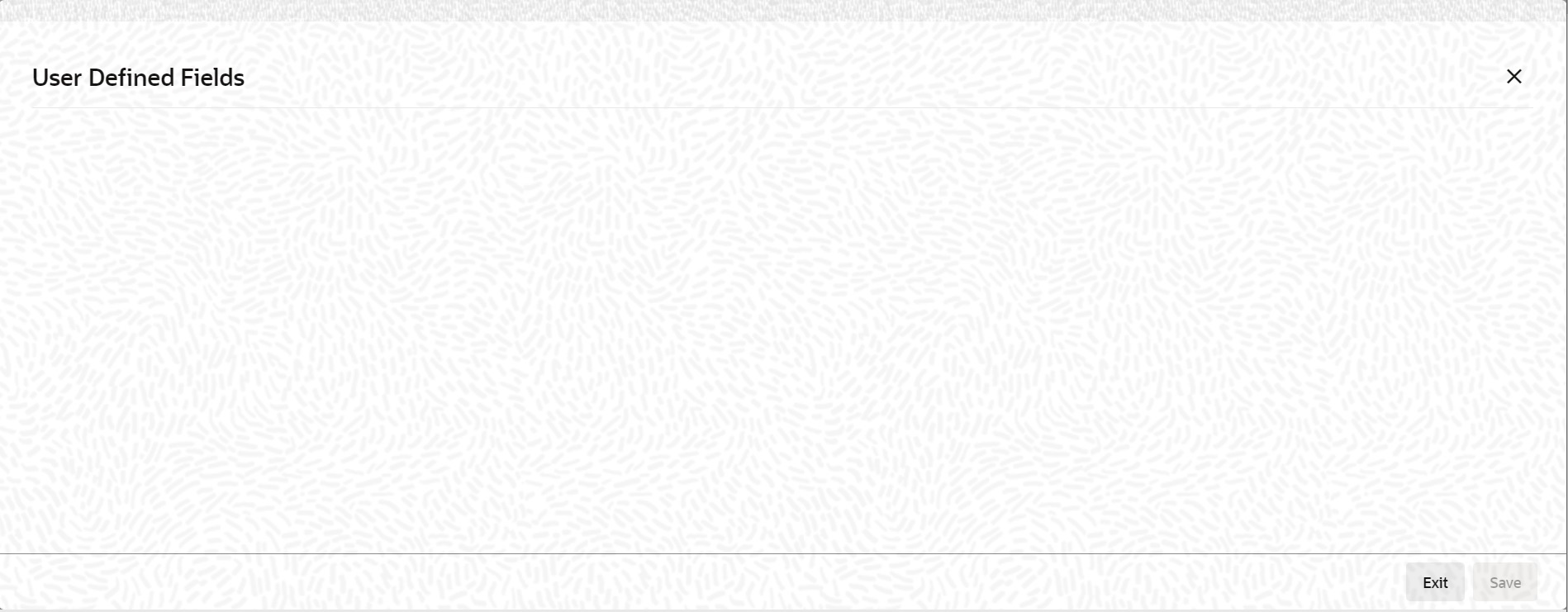2.2 Clause Details
This topic provides the systematic instruction to maintain, specify UDF values and perform operations related to clause details.
A clause is a statement that accompanies a document required under an LC. Instead of specifying the details of a clause every time, you can maintain a list of the standard clauses, which can accompany the documents, required for an LC, in the Clause Maintenance screen.
The advantage of maintaining clause details is that at the time of creating a product or at the time of entering an LC, you only need to specify the code assigned to the clause. All the details maintained for the clause will be automatically picked up.
This topic contains the following sections:
- Maintain Clause Details
- Specify UDF values
- Operations on Clause Maintenance Record
Specify the User ID and Password, and login to Homepage.
Parent topic: LC Maintenance

